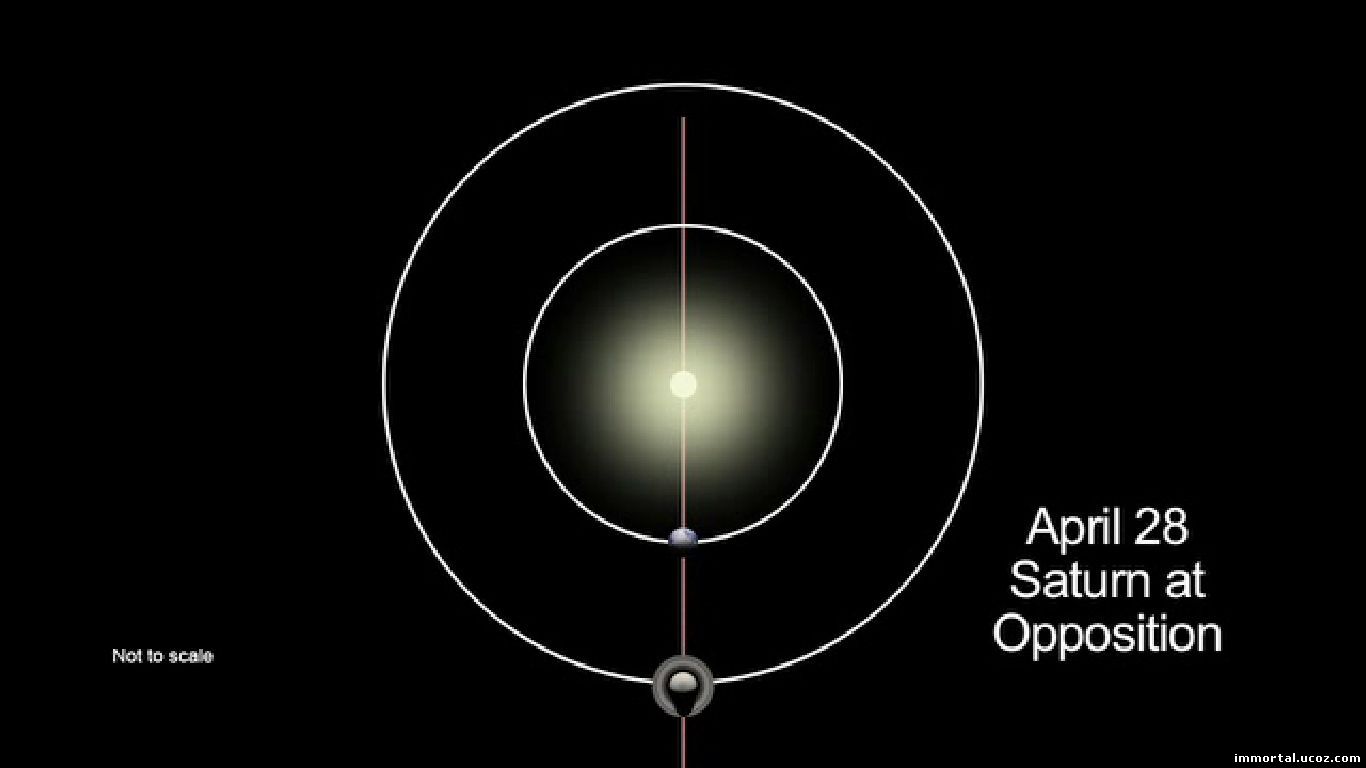 The best view of The best view of
Saturn available to Earth dwellers in six years should be on Sunday (April 28),
with the planet reaching its opposition point, when Earth lies directly between
it and the sun.
You can watch the celestial show live online via the Slooh
Space Camera, which will be broadcasting a feed from its telescopes in Spain's
Canary Islands. You can watch the Saturn webcast live on SPACE.com beginning at
9:30 p.m. EDT on Sunday (0130 GMT Monday).
The giant planet should put on a spectacular show, with its
famous icy rings tilted at a perfect angle for viewing. During Saturn's close
approach to Earth, the planet will be exceptionally bright, reaching about the
same brightness as famous stars such as Betelgeuse. The ringed giant should be
visible all night long on April 27 and 28, and its shadow will fall so that
neither the east nor west side of the rings is darkened.
"Saturn is widely regarded as the most beautiful planet
in the known universe," Bob Berman, contributing editor and monthly
columnist for Astronomy magazine, said in a statement. "And this is the
day that it is largest and hence potentially clearest not just for all of 2013,
but for the past half dozen years, thanks to the greatly improved viewing tilt
of its famous rings. The famous inky-black gap separating its broad white 'B'
ring from its narrower 'A' ring, called the Cassini Division, should be
striking."
Berman will appear as a commentator on the Slooh webcast,
along with Slooh engineer Paul Cox, who will be controlling the Slooh
telescopes robotically from the United Kingdom, and other experts.
Saturn's position will also give skywatchers a chance to
view a mysterious storm brewing on the planet.
"Surrounding the Saturn north pole, which is now angled
toward us better than has been seen for the past two decades, lies a bizarre
hexagon, each of whose six sides is larger than our entire planet Earth,"
Berman said. "The origin of this long-lived feature is utterly mysterious,
and although its location at the very 'top' of Saturn makes it impossible to
see from Earth through any telescope including Hubble, thanks to the sideways
viewpoint we always have, it has given Saturn's north pole a new notoriety. No
doubt, some viewers will 'tune in' to gaze at Saturn close-up and in true color
on this day of its closest approach, merely because of that baffling
feature."
To view the planet with your naked eye or through a
telescope, stargazers in North America should look halfway up the southern sky
around midnight. Saturn will shine to the left of the bright blue star Spica in
the constellation Virgo.
You can also follow the Slooh webcast live via the Slooh
Space Camera website.
Sumber : space
| 

















